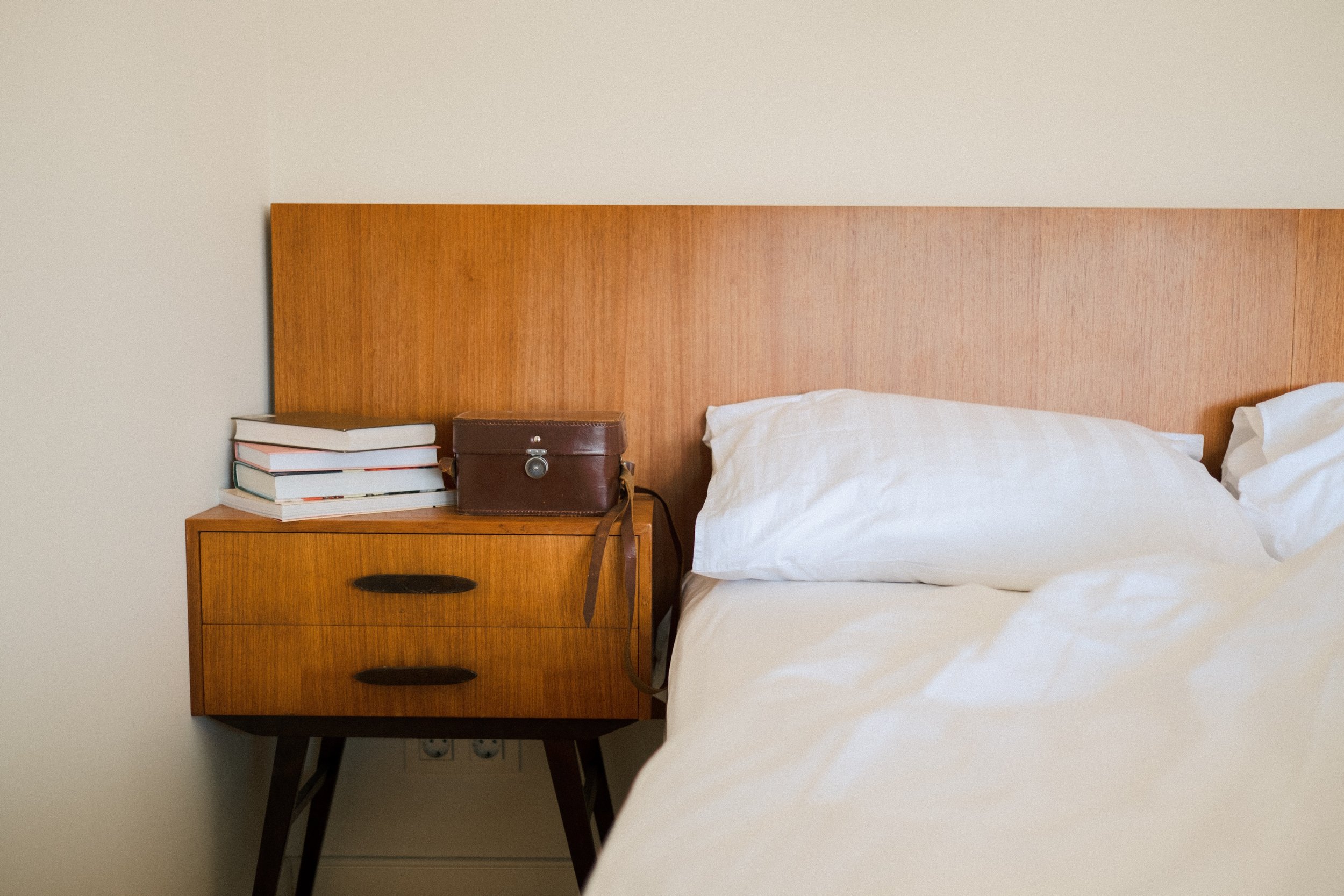Mid-Century Modern Interior Design: The Ultimate Guide
Mid-Century Modern interior design is a style that has stood the test of time and continues to be a popular choice for homeowners and designers alike. This design style, which originated in the mid-20th century, is all about sleek lines, bold colours, and a minimalist aesthetic. It's a style that's both timeless and contemporary, and it's a great way to give your home a modern yet retro feel.
If you're looking to bring a touch of Mid-Century Modern style into your home, this comprehensive guide is for you! We'll provide you with ideas and inspiration for various rooms in your home and offer practical tips to help you achieve the look you desire. Whether you're looking to create a chic living room, a retro-inspired kitchen, or a minimalist bedroom, it’s all in this guide.
Here’s an overview of the topics that will be covered:
What is Mid-Century Modern Interior Design
Mid-Century Modern Interior Design is a style that first became popular in the 1950s and 60s, following the end of World War II. It emerged as a response to the need for affordable and practical design that was accessible to the masses. This design style was heavily influenced by Scandinavian and German design, as well as the Bauhaus movement, which valued simplicity and functionality.
The key features of Mid-Century Modern Interior Design are its minimalist aesthetic and use of bold colours and patterns. This style is characterised by clean lines and a lack of decorative embellishments, with an emphasis on form over function. It's a departure from the ornate and decorative styles that had dominated the early 20th century.
Characteristics of Mid-Century Modern Interior Design
Some of the key characteristics of Mid-Century Modern Interior Design include:
Clean lines: This style is characterised by its simplicity and lack of ornamentation, with clean lines and smooth surfaces dominating the design.
Natural materials: This style often incorporates natural materials, such as wood, leather, and stone, to add warmth and texture to the design.
Earthy and bold colours: Earthy colours like brown, cream, rust, and green are paired with bold colours like teal, mustard yellow and burnt orange to add interest to the space.
Organic shapes: The use of organic shapes, such as curves and circles, create a sense of fluidity and movement in the design.
Graphic patterns: Graphic patterns, such as polka dots, stripes, and geometric shapes, are often used to add visual interest and a touch of playfulness to the room.
Functionality: Mid-Century Modern Interior Design prioritises functionality, with furniture and decor that is both stylish and practical.
Materials and Colours Used in Mid-Century Modern Interior Design
Here are the materials and colours used to create the look and feel of Mid-Century Modern homes:
Wood: Walnut, teak, oak, and rosewood are popular wood types used in Mid-Century Modern interior design. These woods are usually left in their natural state or stained to enhance their natural beauty.
Leather: Leather furniture and decor, such as sofas and chairs, are often used in Mid-Century Modern Interior Design to add sophistication and texture.
Stone: Marble, granite, and terrazzo are commonly used in Mid-Century Modern interior design for floors, walls, and countertops.
Metal: Chrome, brass, and stainless steel are popular metal choices for furniture and lighting.
Colours: Emphasis on warm, earthy colour palette such as browns, oranges, and yellows, as well as cooler shades like blues and greens. These colours are often paired with black, grey and white to create balance and contrast.
Furniture and Lighting in Mid-Century Modern Interior Design
Mid-Century Modern furniture is known for its clean lines, organic shapes, and minimal decoration. Some popular furniture pieces include:
Natural materials: Mid-Century Modern furniture is typically made of natural materials such as wood, leather, and metal. Teak and walnut were particularly popular choices for wood furniture during this era.
Retro-inspired patterns: While the furniture itself is usually simple, it's not uncommon to find retro-inspired patterns on upholstery or throw pillows.
Iconic designs: Furniture and decor items often feature curves and gentle, flowing lines. Several iconic furniture designs like the Eames Lounge Chair, the Tulip Chair, and the Barcelona Chair remain popular to date.
Lighting: Lighting often features a combination of metal and glass materials with clean lines and organic shapes. Popular lighting fixtures include pendant lights, floor lamps, and table lamps.
How to Incorporate Mid-Century Modern Interior Design into Your Home
Incorporating Mid-Century Modern interior design into your home can be done in a few simple steps:
Start with the basics: Begin by selecting a neutral colour palette for your walls and floors. This will serve as a backdrop for your furniture and accessories.
Choose few pieces of statement furniture: Invest in a few key pieces of Mid-Century Modern furniture to serve as the focal points of the room. Look for pieces with clean lines and natural materials. Choose furniture made of wood, leather, and metal to add texture and warmth.
Add bold colours and patterns: Incorporate retro-inspired patterns and add a pop of colour through accessories such as rugs, throw pillows, and artwork.
Incorporate lighting: Lighting is an important aspect of Mid-Century Modern design, so be sure to incorporate a statement light fixture into your space.
Accessorise with vintage pieces: Mid-Century Modern interiors are known for their unique and quirky accessories. Consider adding vintage finds, such as a retro clock, atomic-era vase, or funky wall art, to your decor for a playful touch.
Mix and match: Don't be afraid to mix Mid-Century Modern pieces with other styles. A Mid-Century Modern sofa can look great with a traditional rug or a contemporary coffee table.
Mid-Century Modern-inspired Design Ideas for Various Rooms at Home
Mid-Century Modern design is versatile and can be incorporated into any room of the house. Here are some design ideas for different rooms:
Living Room: Incorporate a vintage feel to your living room with a mix of modern and classic pieces. Choose furniture with clean lines and geometric shapes, like a sofa with a tapered back or a triangular coffee table. Use warm colours like mustard yellow, burnt orange, or teal to complement the wood finishes in the room.
Kitchen: Keep your Mid-Century Modern kitchen clean and streamlined. Stick to a simple colour palette with natural materials like wood or stone for texture. Consider open shelving to display unique cookware or dishware. Add a statement piece like a unique pendant light or a vintage clock.
Bedroom: Create a cosy and intimate space by using warm and earthy tones like brown, beige, or terracotta. Choose a bed with a low-profile frame and a headboard made of wood. Add texture through materials like linen or wool and incorporate Mid-Century elements like a retro-inspired bedside table or a vintage record player.
Bathroom: Choose a colour palette with warm, neutral tones like beige, brown, and black. Incorporate natural materials like wood or stone through the use of a wooden vanity or a stone sink. Add a statement piece like a unique mirror or a sconce with a brass finish to tie the room together.
Home office: Choose a Mid-Century Modern desk with clean lines and a natural wood finish. Add a statement chair, such as the Eames Executive Chair, and incorporate retro-inspired accents with artwork and accessories.
Worried about overpaying for your home renovation?
Let AI be your superhero!
IDIT® Savings - AI Renovation Cost Saver
With this FREE innovative AI tool, you can scan renovation quotes with ease and identify cost-saving measures that won't compromise on quality.
You can now enjoy a successful renovation with additional savings from the savings report.
Conclusion
Mid-Century Modern interior design is a timeless style that has remained popular for decades and is still going strong. With its unique blend of vintage and contemporary design elements, it's easy to see why so many homeowners are drawn to this style.
We hope this comprehensive guide has given you ideas and inspiration to create a home that reflects your unique personality and style, while also staying true to the core principles of Mid-Century Modern interior design. Whether you're looking to create a chic living room, a retro-inspired kitchen, or a minimalist bedroom, remember that the key is to keep it simple, functional, and elegantly understated. So, go ahead and incorporate this timeless design style into your home and enjoy the chic, modern yet retro feel it brings.
Frequently Asked Questions
-
In Mid-Century Modern interior design, it's important to embrace simplicity and functionality. Keep the space clutter-free and choose furniture with clean lines that don't overwhelm the room. Incorporate reflective surfaces like mirrors or glass to create the illusion of more space. Light colours and natural light can also make a small space feel more open and airy.
-
One of the biggest mistakes is going overboard with retro or vintage elements, which can make the space feel outdated rather than timeless. Instead, stick to a few key pieces and mix and match with other styles. It's also important to pay attention to the scale of the furniture and decor, as Mid-Century Modern pieces tend to be smaller in scale. Finally, be mindful of the colour palette and avoid using too many bold or clashing colours.
-
Mid-Century Modern design is a specific style that was popular during the mid-20th century, while Contemporary design refers to current and modern design trends. While there may be some overlap between the two styles, Mid-Century Modern design focuses on functionality, organic shapes, bold colours and use of natural materials. Contemporary design, on the hand, is more fluid and incorporates high-tech feature and modern materials like metal, glass and concrete.
-
Mid-Century Modern interior design can be mixed with various other styles to create a unique and personalised look in your home. Here are some popular styles that blend well with Mid-Century Modern:
Scandinavian: Both Mid-Century Modern and Scandinavian design share a focus on functionality and simplicity. Mixing the two can result in a clean and minimalistic space with a touch of warmth.
Bohemian: The eclectic and laid-back nature of Bohemian style can be a great complement to the sleek lines and minimalism of Mid-Century Modern. Combining the two can result in a fun and inviting space with a retro vibe.
Industrial: The raw and edgy nature of industrial design can contrast nicely with the sleek lines and elegance of Mid-Century Modern. Combining the two can add character and texture to a Mid-Century Modern home.
-
Mid-Century Modern interior design can be expensive if you choose to invest in authentic vintage furniture and custom furnishings. However, you can achieve the same look on a budget by purchasing replicas or vintage pieces from second-hand stores or online marketplaces like Carousell or Facebook marketplace. Additionally, many Mid-Century Modern homes have custom built-ins and uses high-quality materials, which can drive up their price. If you want to take your cost savings to the next level, consider using our “AI Renovation Cost Saver - IDIT® Savings” tool. This powerful tool uses artificial intelligence to analyse your renovation quotations and suggest cost-saving measures for your desired home.







